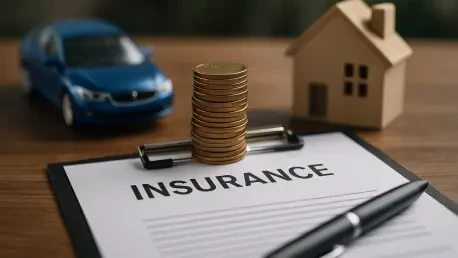Homeownership comes with a hefty price tag, and insurance premiums often add a significant burden to monthly expenses, sometimes running into hundreds of dollars annually. What if making a few calculated improvements to a property could ease that financial strain? Many homeowners are unaware that specific upgrades can lead to substantial savings on insurance costs by minimizing risks that insurers worry about most. From bolstering structural integrity to embracing cutting-edge technology, certain changes can signal to insurance providers that a home is less likely to result in costly claims. This exploration delves into key renovations that not only enhance safety but also trim down those daunting premium bills, offering a dual benefit of protection and savings.
While the prospect of reducing insurance costs through home upgrades is enticing, it’s equally important to recognize that not all renovations are viewed favorably by insurers. Some modifications, though aesthetically pleasing or functional, might inadvertently increase risks or elevate a property’s replacement value, leading to higher premiums. Striking the right balance requires a clear understanding of which improvements align with insurer priorities. This discussion will navigate through the upgrades that can save money, the potential pitfalls to avoid, and strategies to ensure that every renovation decision is a financially sound one.
Enhancing Home Safety for Lower Premiums
Fortifying Foundations and Systems
Making strategic upgrades to a home’s core components can significantly reduce the likelihood of damage, thereby catching the eye of insurance providers looking to minimize claim risks. Replacing an aging roof with modern, wind-resistant shingles or adding hurricane straps, particularly in areas prone to severe storms, often results in discounts ranging from 5% to 35%. Though the upfront cost of a new roof might hover around $9,000, the long-term savings on premiums can make this investment a wise choice. Insurers value such improvements because they directly lower the chances of wind or storm-related claims, especially in regions where weather hazards are a constant threat. Beyond the financial perk, a sturdier roof also offers peace of mind during turbulent seasons, ensuring the home remains a safe haven against the elements.
Another critical area for upgrades lies in the often-overlooked electrical and plumbing systems, especially in homes constructed before the 1950s when outdated infrastructure was the norm. Updating old wiring or corroded pipes drastically cuts down on risks like electrical fires or water leaks, which are common causes of major insurance claims. Insurance companies frequently reward these updates with lower premiums, recognizing that modern systems are far less likely to fail catastrophically. The process might involve a significant initial outlay, but the reduction in potential hazards translates into a safer living environment and a more favorable insurance assessment. Homeowners who tackle these renovations demonstrate a proactive stance on risk management, a trait that insurers are eager to incentivize through discounted rates.
Preparing for Natural Disasters
Equipping a home to withstand environmental challenges is another effective way to secure insurance savings, particularly for properties located in high-risk zones. Installing features like sump pumps, storm shutters, or impact-resistant windows can offer robust protection against flooding and high winds, hazards that often lead to expensive repairs. Such upgrades are frequently met with discounts from insurers, as they diminish the probability of significant damage during natural disasters. These measures are especially valuable in coastal or flood-prone areas where water intrusion is a recurring issue, signaling to insurance providers that the property is better equipped to handle adverse conditions. The added resilience not only lowers premium costs but also enhances the overall durability of the home.
For those residing in earthquake-prone regions, seismic retrofitting presents a compelling opportunity to reduce insurance costs while bolstering safety. Measures such as bolting a house to its foundation or reinforcing chimneys can yield premium discounts of up to 25%, often supported by programs like the California Earthquake Authority for older structures. These upgrades address the unique vulnerabilities of homes in seismic zones, where even minor tremors can cause substantial structural damage. Insurers recognize the value of such modifications in preventing catastrophic losses, making them a financially sound choice for homeowners in these areas. Beyond the monetary benefits, retrofitting provides a critical layer of security, ensuring that the home can endure the unpredictable forces of nature with minimal harm.
Leveraging Technology and Avoiding Pitfalls
Embracing Smart Home Innovations
The rise of smart home technology has introduced a new frontier in risk reduction, with many insurance providers offering incentives for homeowners who integrate these systems. Devices like smart door locks, motion-sensor cameras, and flood sensors enable real-time monitoring and rapid response to potential threats, a feature that insurers increasingly appreciate. Companies such as Farmers Insurance have started providing specific discounts for connected home systems, acknowledging their role in preventing theft, water damage, and other costly incidents. These technologies represent a modern approach to home protection, allowing residents to stay ahead of issues before they escalate into major claims. The appeal lies not just in potential savings but also in the added convenience and control over home security.
In addition to security-focused gadgets, smart thermostats and other environmental monitoring tools are gaining traction as tools for insurance savings. These devices can detect anomalies like temperature spikes that might indicate a fire risk, alerting homeowners and sometimes insurers to act swiftly. By demonstrating a commitment to proactive risk management through such technology, properties become less of a liability in the eyes of insurance assessors, often resulting in lower premiums. The integration of these systems is relatively straightforward and cost-effective compared to major structural upgrades, making them an accessible option for many. As insurers continue to adapt to technological advancements, adopting smart home solutions could become a standard expectation for maximizing discounts and ensuring comprehensive protection.
Navigating Risky Renovations
While many upgrades can lead to insurance savings, certain home additions carry the potential to increase premiums by introducing new liabilities. Features often labeled as attractive nuisances, such as swimming pools, trampolines, or hot tubs, heighten the risk of injuries, prompting insurers to raise rates or impose strict safety requirements. For instance, pools might necessitate locked fencing to mitigate accident risks, and some insurers may even refuse coverage for elements like diving boards due to their high hazard potential. Homeowners considering such additions must weigh the enjoyment they provide against the financial implications of higher insurance costs. Understanding these risks upfront can prevent unexpected premium hikes after the installation is complete.
Beyond recreational features, other modifications like traditional wood-burning fireplaces or operating a home-based business can also drive up insurance expenses. Fireplaces pose an elevated fire risk, while a business run from the home may require additional liability coverage to account for client interactions or equipment storage. These upgrades often necessitate specialized policies or endorsements, adding to the overall cost of coverage. Insurers view such changes as increasing the likelihood of claims, whether through property damage or personal injury, and adjust premiums accordingly. Homeowners contemplating these additions should carefully assess the long-term financial impact and explore ways to mitigate associated risks before proceeding with installation.
Maximizing Benefits Through Strategic Choices
Partnering with Insurance Providers
One of the most effective ways to ensure that home upgrades translate into insurance savings is by engaging directly with an insurance agent before embarking on any renovation project. Agents can provide valuable insights into which improvements are likely to qualify for discounts, such as safety or disaster-resistant features, and which might result in higher premiums due to increased risks or property value. This proactive dialogue allows homeowners to align their renovation plans with insurer priorities, avoiding costly missteps. Transparency about planned changes can also uncover specific programs or incentives that might not be widely advertised, ensuring that every upgrade contributes positively to the bottom line.
In cases where certain renovations inevitably lead to higher premiums, there are still strategies to manage overall insurance costs effectively. Options like increasing deductibles or bundling home and auto policies can offset rises in premiums, maintaining affordability despite added coverage needs. These approaches require careful consideration of risk tolerance and financial capacity, but they offer a practical means to balance the cost of desirable upgrades with budget constraints. Consulting with an insurer not only clarifies the impact of specific projects but also opens the door to tailored solutions that keep expenses in check, making it a critical step in the planning process.
Reflecting on Smart Investments
Looking back, the journey through various home upgrades revealed a clear pattern of prioritizing safety and risk reduction to achieve insurance savings. Investments in robust roofs, updated systems, and disaster preparedness measures consistently proved their worth by lowering premiums and enhancing property resilience. The adoption of smart technology also emerged as a game-changer, aligning modern convenience with financial benefits through insurer discounts. Conversely, caution was warranted for renovations that introduced liabilities or inflated replacement costs, as they often led to higher expenses.
Moving forward, the focus should be on informed decision-making to maximize the financial advantages of home improvements. Homeowners are encouraged to maintain open communication with insurance providers, seeking guidance on potential discounts and cost implications before starting any project. Exploring additional ways to manage premiums, such as policy adjustments or bundled coverage, can further ensure that upgrades remain cost-effective. By approaching renovations with a strategic mindset, the dual goals of a safer home and reduced insurance costs become not just achievable, but a natural outcome of thoughtful planning.









